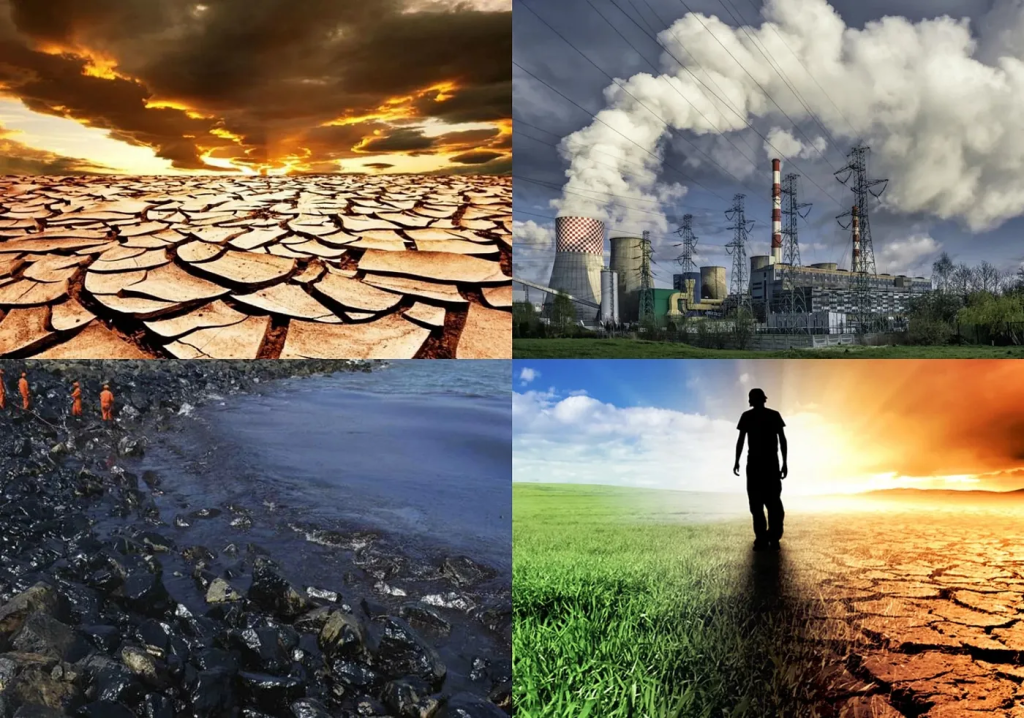
We’ve all heard the term “climate crisis” all over the news and media, but what does that actually mean?
When activists and politicians refer to climate change, global warming, and/or the “climate crisis,” they are talking about the overall rise in global temperatures and the effects of that rise. The earth has been cycling between glacial (cold) and interglacial (warm) periods for the past million years (roughly), so ‘global warming’ is not a new concept. Since the mid-20th century, we have been seeing unnaturally high levels of carbon dioxide and other greenhouse gases, leading to an increase in global temperatures.
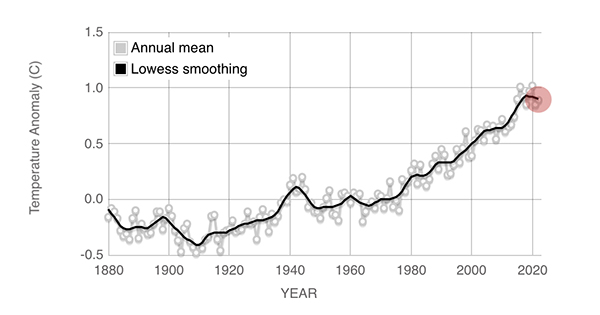
What is causing this overall rise in global temperatures?
The biggest contributor to global warming is the increased concentration of greenhouse gases in the atmosphere. The five greenhouse gasses are Carbon dioxide, Methane, Nitrous Oxide, Chlorofluorocarbons, and Water Vapor. They are called greenhouse gases because of their blanketing effect on the atmosphere.
A good way to think about the greenhouse effect is by looking at the gasses as a protective barrier around the earth, helping to maintain a stable temperature. They absorb heat and slowly release it back out into space. However, recently, with the burning of fossil fuels, there has been an increase in carbon dioxide and other greenhouse gasses, causing more heat to be trapped in the earth’s atmosphere and leading to higher surface temperatures. These greenhouse gasses are not all harmful, so it is important to understand where they are coming from and why we need them.
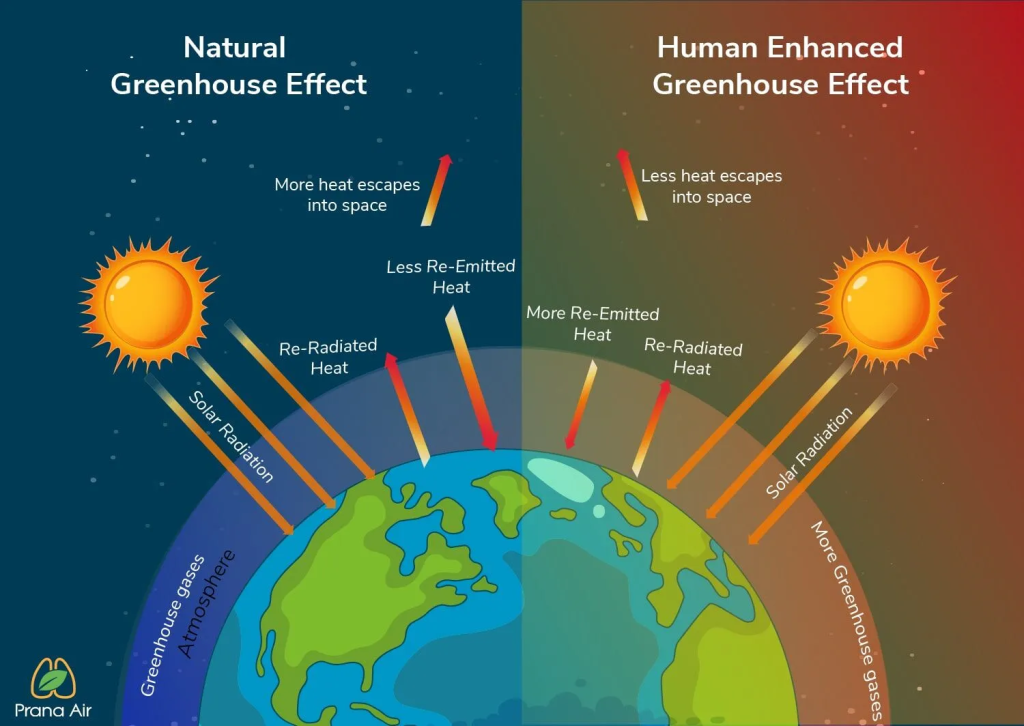
Greenhouse Gases:
Carbon dioxide:
Carbon dioxide is a naturally occurring chemical compound that is necessary for all living things. It is classified as a greenhouse gas and is essential for the stability of our atmosphere. Carbon dioxide releases naturally through the ocean, volcanoes, the decomposition of biomass, and wildfires. However, these are not our concerns when it comes to high levels of CO2. What scientists are concerned about is deforestation, industrial development, and the burning of fossil fuels. Those activities release more carbon dioxide than the earth has previously handled and at an increased rate since the industrial revolution. So, even though carbon dioxide is a naturally occurring compound and is necessary for life, the concentration of it is becoming harmful to all living organisms and ecosystems.
Methane:
Methane is also a naturally occurring compound, but its presence in the atmosphere has doubled since the industrial era. It is naturally emitted by the decomposition of plants and from livestock digestion and manure. It is also emitted by human activities such as the burning of fossil fuels, and natural gas is made up almost entirely of methane. Methane is a far more dangerous greenhouse gas due to it being able to trap heat much more effectively than CO2. The earth has maintained a delicate balance, so methane does not make up a large portion of the atmosphere, but due to anthropogenic activities, it has increased dramatically.
Nitrous Oxide:
Nitrous oxide comes from the production and use of farming fertilizers. It lasts in the atmosphere for around 115 years (much less than CO2 and Methane that can stay for 300-1,000 years) and is 300 times as potent as carbon dioxide. This is the main culprit for depleting the ozone layer (our protection from harmful UV radiation). Reducing the amount of this greenhouse gas in the atmosphere could have a quick and effective impact on the climate crisis.
Chlorofluorocarbons:
Chlorofluorocarbons are not naturally occurring. They are completely human-made. They are used in aerosols, refrigerants, and solvents. There are fewer CFCs in the atmosphere, however, they trap significantly more heat than CO2. They deplete the ozone layer, causing harmful UV radiation.
Water Vapor:
This greenhouse gas is the most abundant. It is not a direct cause of global warming, though. Water vapor acts in response to the conditions around it. For example, if the oceans are warming up, there will be more evaporation, leading to more water vapor in the atmosphere. Overall the atmosphere will warm, but it is not because of the water vapor, it is merely reflecting and responding to what is happening around it.
Why are greenhouse gases bad?
The greenhouse effect is not an inherently bad thing, as the media may imply. It is a necessary phenomenon that regulates the surface temperature of the earth. And as said before, the increased concentration of them is where the problem lies. The earth is naturally suited for life and has a myriad of processes taking place all the time that work together to create a stable environment for all living things, and anthropogenic activities have begun to disrupt that balance. Now that we have discussed what is going on scientifically with the climate crisis, we can better understand what is happening on the global political stage.
International Environmental Policy Contradictions
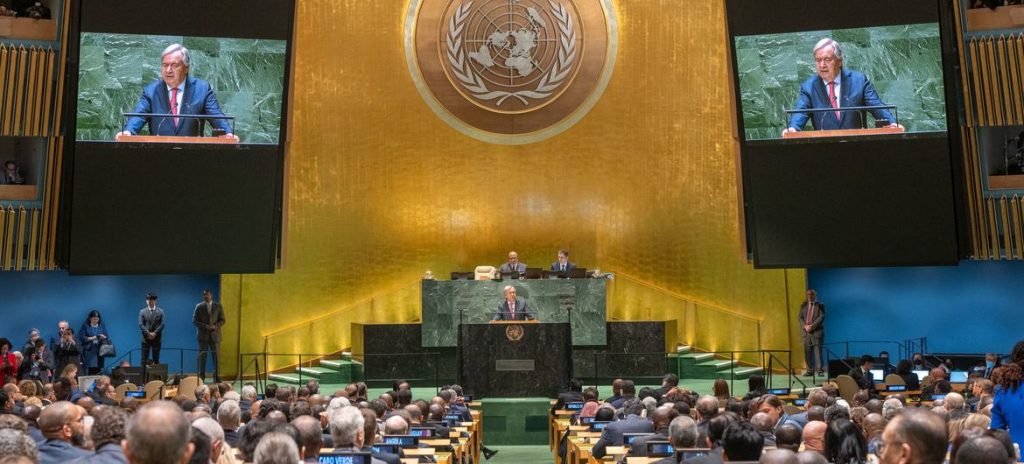
What’s going on right now with climate change policy?
Recently, New York hosted the U.N General Assembly, where Secretary-General António Guterres called the world to action. Guterres has made the climate crisis central to his agenda. He only invited nations that had effectively taken the crisis seriously to speak at the assembly. The United States and China were not among those asked to speak, as the world’s two largest polluters.
The US in particular has been in a constant state of uncertainty when it comes to climate policy. While President Biden announced the creation of a ‘climate conservation corps,’ the nation broke the record for oil production. The US also has a habit of being hypocritical when discussing the climate policies of other nations. They often do not follow the same policies they criticize others for falling short of. When it comes to international environmental law, there can’t be two sides to everything. The US needs to decide whether or not to take climate change seriously. It has become a part of political polarization, whether or not a person considers climate change a threat, and that mindset needs to be shifted.
Why should people care about this political issue?
Every individual on earth will be affected by climate change, regardless of their political affiliation or belief system. The US’ hypocrisy is not a reflection of its people, but something for its people to consider. The Sustainable Development Goal Summit intends to dramatically reduce the burning of fossil fuels, and other initiatives like SDG are tirelessly working to ensure a sustainable future, but it is difficult to do such when nations are not capable of deciding where they stand.
Every person has a voice that deserves to be heard. The US has been called out, so what will its people do in response? Will we work together to do better and stay true to our promises to international environmental initiatives or stay polarized? Our future is up to us, and we must take this time to work collectively towards a better one.
Greenhouse gases and global politics are clearly big issues, but what can individuals do to help?
There is an overwhelming abundance of environmental organizations that are all working towards similar goals, and it can be difficult to choose which one to support. If you support the Rainforest Alliance does that mean you don’t care about the oceans? If you support the Ocean Project clearly you don’t want to help preserve the tundra, right? No. These are all mindsets that people get caught up in when it comes to supporting environmental groups. There are also groups out there that are not sustainable and “greenwash” or hide the truth behind lofty environmental language.
That’s where the Cornell Climate Crusaders can help. We want to provide you with beneficial resources that will help to make a difference. Changing your entire lifestyle is not necessary, you just need to be willing to learn and grow.
Here are some organizations that are definitely worth checking out and potentially working with:
- World Wildlife Fund
- Jane Goodall Institute
- Rainforest Alliance
- Sierra Club
- Oceana
- Coral Reef Alliance
Climate change is often a quite depressing subject, with a lot of negativity and little room for a positive mindset, but it is essential that we do not lose hope in ourselves. We can still repair what we have damaged, but we must do it together. We, as a society, need to realize that we are also a part of the balance of nature, and do better to recognize the role that we play within it.

https://morethanjustparks.com/bipartisan-era-of-environmental-activism/
Cornell Climate Crusaders
When we fight against nature, we fight against ourselves. Fight for a brighter, more sustainable future.
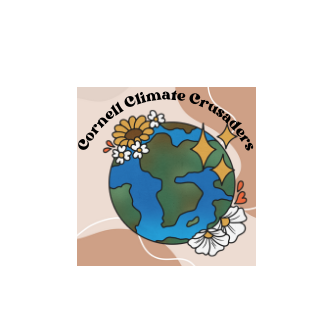
Leave a Reply